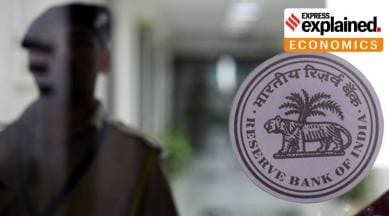Udit Misra is Senior Associate Editor. Follow him on Twitter @ieuditmisra ... Read More
© The Indian Express Pvt Ltd

On Thursday, the Monetary Policy Committee (MPC) of the Reserve Bank of India (RBI) will convene to formulate its response to the Government of India about the high rate of inflation in the country.
The RBI is by law responsible for maintaining price stability. Under the “inflation-targeting” regime that began in 2016, the central bank is required to target an inflation rate of 4 per cent, with a leeway of 2 percentage points on either side. Thus, for any given month, RBI’s comfort zone for inflation lies between 2 per cent and 6 per cent.
What has triggered this meeting?
Retail inflation for September was 7.4 per cent — which means the price level for retail consumers last month was 7.4 per cent higher than what it was in September 2021. This also means that retail inflation — which is calculated using the Consumer Price Index (CPI) — has been outside the RBI’s comfort zone for three consecutive quarters beginning January.
Under the RBI Act, 1934, if the central bank fails to meet the inflation target for three consecutive quarters, it is required to provide the following information to the government:
How does the MPC target inflation?
The MPC has six members including the RBI Governor — three each nominated by the RBI and the government. The MPC meets every two months — that is, six times a year — in February, April, June, August, October, and December to evaluate the current status and outlook for inflation and economic growth. Based on that assessment, it tweaks the repo rate, which is the interest rate at which the RBI loans money to the banking system. It is for this reason that movements in the repo rate influence the overall interest rates in the economy.
Typically, when the MPC wants to contain inflation, it raises the repo rate. Such a “dear money” policy makes all types of borrowing — both for consumers (say, car loans) and producers (say, fresh business investments) — costlier and effectively slows down economic activity in the economy.
When inflation outlook is benign but growth is stalling, the RBI can choose to lower the repo rate and promote economic activity; such a “cheap money” policy incentivises people to spend money instead of saving it.
How did RBI fail to check inflation?
RBI’s response to the government — which it must provide by November 12 — will be privileged communication. However, reading previous MPC statements and comparing them to India’s inflation can provide clues on where RBI fell behind the curve. Note, however, that the MPC’s knowledge of inflation typically lags by two months — which means as it deliberates in October, it works with data until August.
The latest surge in inflation began from October 2021. This is what the MPC said after meetings since then:
OCT 2021: “The inflation trajectory is set to edge down during Q3:2021-22 (October to December)… The CPI headline momentum is moderating with the easing of food prices which, combined with favourable base effects, could bring about a substantial softening in inflation in the near-term.”
However, Prof Jayanth R Varma, one of the government-nominated members, “expressed reservations” about the RBI’s continued “accommodative” stance. Varma flagged rising “core” inflation, which is the inflation rate without the effect of fuel and food prices, which often fluctuate wildly. Core inflation is a more stable measure that rises and falls more gradually than the headline number.
As the chart shows, India had been witnessing high headline inflation since late 2019. While there was some relief on the headline inflation front in the first half of 2021, core inflation became a concern by October. The MPC noted: “Core inflation…remained elevated and sticky at 5.8 per cent in July-August 2021.”
This was a clear red flag. It underscored India’s vulnerability to sudden spikes in inflation if either food or fuel prices went up. However, the RBI kept the repo rate unchanged at 4 per cent. In the limited context of what happened later in 2022, this was the first point where RBI fell behind the curve.
DEC 2021: By this time, RBI knew that core inflation in October had inched further up to 5.9 per cent. But it still chose to not raise interest rates. “…The MPC decided to keep the policy repo rate unchanged at 4 per cent and to continue with an accommodative stance as long as necessary to revive and sustain growth on a durable basis,” it said.
FEB 2022: By this time, headline and core inflation were converging at the 6 per cent level. But the MPC still refused to raise interest rates, stating that “inflation is likely to moderate” between December 2021 and September 2022. Prof Varma again expressed reservations with the accommodative stance. As it happened, Russia invaded Ukraine later in February and crude prices went shooting up.
APR 2022: It was clear that inflation was unlikely to “moderate”, and the MPC recognised it formally by sharply raising the inflation forecast for the current financial year from 4.5 per cent to 5.7 per cent. And yet, it did not actually take action to raise interest rates.
In April the retail inflation rate came in at 7.8 per cent, the highest since the Narendra Modi government took charge in 2014, and almost double the mandated target rate. The MPC was forced to call an emergency meeting in May to raise the repo rate. Rates have since gone up by 190 basis points, including three consecutive 50 bps increases in June, August, and September.